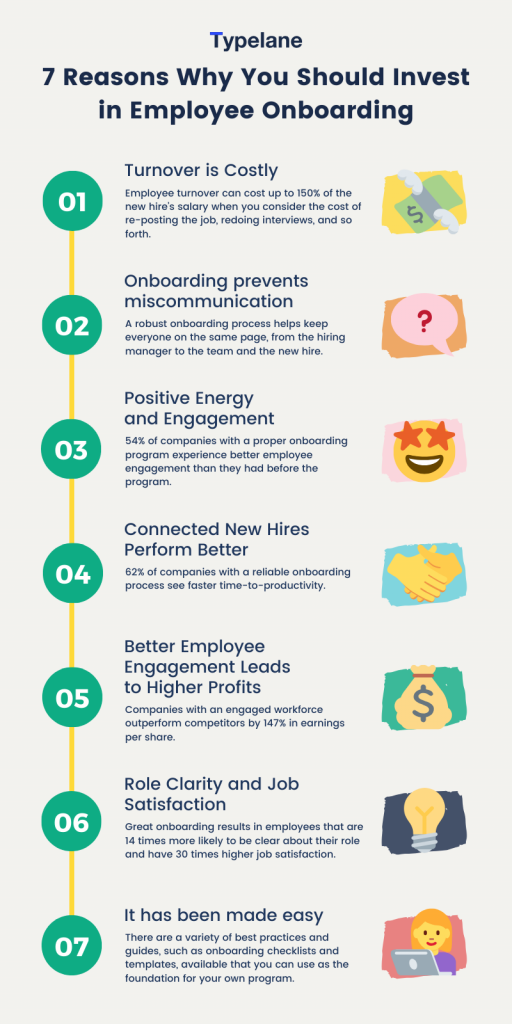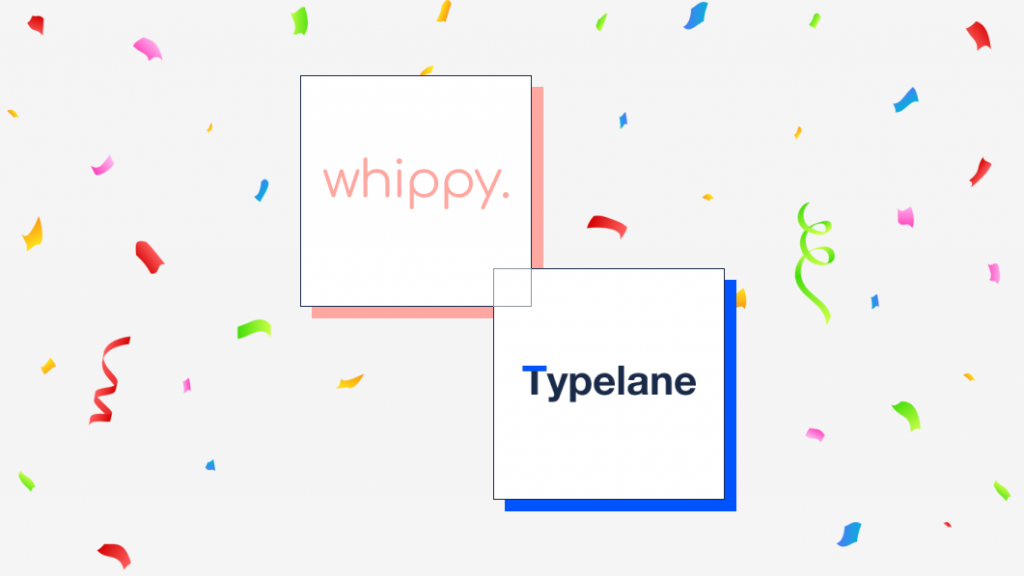7 Reasons Why You Should Invest in Employee Onboarding


Employee onboarding is the process of bringing a new hire into your organization. It’s often confused with orientation, but the two are not the same. Employee onboarding is longer and more involved, where orientation is a one-time event that only covers the first few days of work.
Onboarding starts with the job offer and extends through all of the training and time it takes for a new employee to fully understand and mesh with their new department. You’ll have the new hire meet with team members, managers, and other co-workers. There may also be starter projects to help the new hire get comfortable with your software, tools and processes. It is also good to help them understand the career potential of the position so that they see themselves with your company over the long-term. Why is all this so important? Here are seven reasons to invest in employee onboarding:


1. Turnover is Costly
Financially, employee turnover can cost up to 150% of the new hire’s salary when you consider the cost of re-posting the job, redoing interviews, and so forth. However, the financial aspect is only part of the story. Turnover impacts the entire team negatively:
- It can cause low morale and damage your existing staff’s trust in management.
- It lengthens the time that people have to do extra work until the right person is hired.
- It can decrease the productivity of the team; it’s hard for people to cover all the work, especially when they thought someone new was going to take care of it.
- Finally, it will be hard for employees to bond with the next new hire if they don’t trust they’ll stick around.
2. Onboarding prevents miscommunication
A robust onboarding process helps keep everyone on the same page, from the hiring manager to the team and the new hire. It’s very frustrating for a new employee to expect one thing, only to find that the team expects something different from them. Onboarding includes both an emphasis of the job description and formal sit-downs with the team and the managers. These meetings allow everyone to not only bond as a group but to talk about what they hope for and expect from the relationship. You can’t afford to have miscommunication derail projects or confuse a new employee.
3. You Want Positive Energy and Engagement
54% of companies with formalized onboarding programs experience better employee engagement than they had before the program. Feeling welcome and accepted by those around you is essential to employee engagement, and onboarding helps provide that. Traditional onboarding may have included a way-too-fast tour of the facility along with quick waves at other workers, but it was primarily focused on paperwork. That can take the positive buzz out of any situation. Make sure the onboarding process is engaging and that the new employee has an opportunity to revisit it and ask questions if needed.
4. Connected New Hires Perform Better
Very few people do well when they are expected to “sink or swim” in a new position. Handing someone a pile of manuals and telling them to get to it is not the way to get excellent performance out of anyone. Yes, people you hire should be “go-getters”, but that doesn’t mean they understand your specific processes, software, and culture. It takes more than a manual to get there. If you want new hires to perform to their potential – you need to start with training and team building that helps them learn the ropes. Over time, you can increase their goals and move toward independence, but it should be done step-by-step. The onboarding process will make it easier – 62% of companies with a reliable onboarding process see faster time-to-productivity.
5. Better Employee Engagement Leads to Higher Profits
So far, we’ve talked about impacts that affect the bottom line but they can sometimes be hard to quantify. Time for some hard numbers – companies with an engaged workforce outperform competitors by 147% in earnings per share. What you might not realize is that a great onboarding program doesn’t just boost the engagement for the new employee, it:
- raises the excitement and bond of the entire team
- enable the team to revisit its mission and explain to a new person what they do and why.
- helps current staff reconnect with the company and get excited again.
- Can give new ideas and a fresh perspective for the team, who can start to also feel the excitement just from the energy of a new employee.
6. Great Onboarding Leads to Role Clarity and Job Satisfaction
As you probably know, the job description you put out for recruitment doesn’t tell all the details of a position. The job ad most often can’t – there are just too many nuances and it’s impossible to include all of them in a job ad. As a result, a new hire can join your team without a clear idea of what they are expected to do. Onboarding can fix that. Great onboarding results in employees that are 14 times more likely to understand their role and they have 30 times higher job satisfaction. Those are results everyone needs in their organization. Giving each individual the right tools to succeed is well worth the investment and will pay dividends in both the short and long term.
7. It has been made easy
If you think that your investment in onboarding means starting from scratch, you can think again. There are a variety of best practices and guides, such as onboarding checklists and templates, available that you can use as the foundation for your own program. These will help you ensure that you don’t miss any critical steps and provide tips on ensuring a great first day, setting goals, and more. By taking advantage of existing best practices, you can save yourself both time and money in creating your perfect onboarding process. That means you can get all the benefits with a fraction of the effort.
We hope that these reasons help you understand just how important a great employee onboarding experience is and why you should invest both time and money in it. We have also listed 5 easy steps to improve your onboarding to help you get started.
Sign up for our newsletter!
Fine-tune your knowledge within on- and offboardings with our monthly newsletters.


